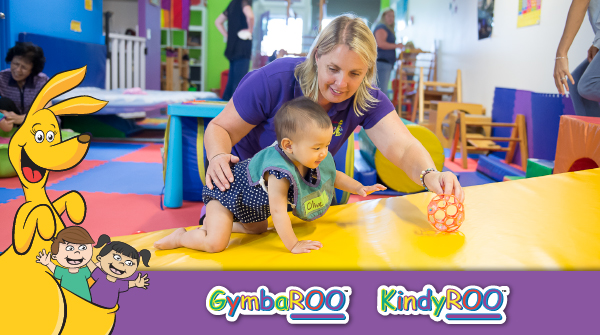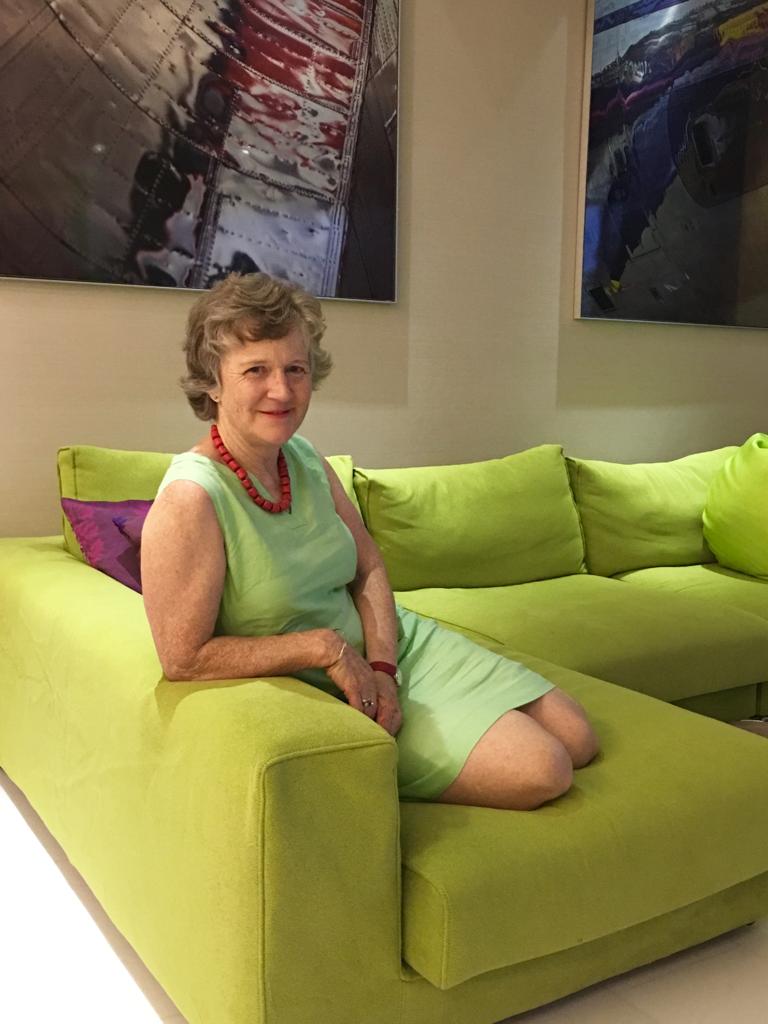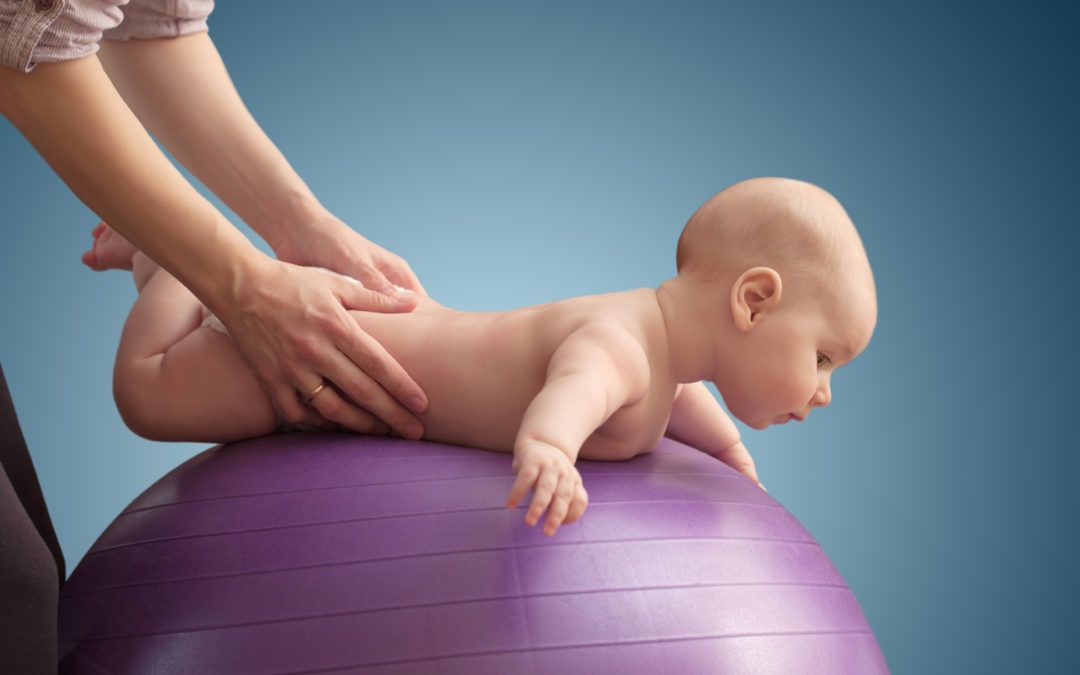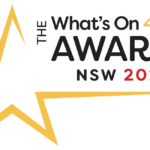Many parents instinctively work out that they can settle their new baby though gentle movement. Yes, that is why you sway in the supermarket queue even when you don’t have the baby with you!! So why do babies like movement and is it a useful way to spend your time when you are with them?
As adults some of us have great balance and some not so great. This is not just luck of the draw. It is, in most cases, a result of the balance experiences or the vestibular stimulation we received as babies and young children. Any gentle activity that gently and safely rocks, rolls, tumbles, bounces, swings and spins your babies provides them with vestibular stimulation.
This stimulation of the balance system is centred in the inner ear. Movement activities that stimulate vestibular development help your babies’ brains and bodies to develop in an amazing number of ways! Vestibular activities not only aid the development of balance, but also the development of muscle tone, posture, co-ordination, space awareness, vision and eye movements, the inhibition of primitive reflexes and speech, hearing and language development!
It is not surprising that recent studies have shown that children who have been given regular vestibular stimulation display improved brain and body development.
What are the Benefits of Vestibular Activities for Babies?
Vestibular activities not only aid the development of balance, but also the development of muscle tone, posture, co-ordination, space awareness, vision and eye movements, the inhibition of primitive reflexes and speech, hearing and language development!
These activities also provide babies with opportunities to use and to strengthen these muscles, encouraging the development of good posture and coordination. With each of these activities, babies are developing head control as their position in space is changed. This is very important for making sure babies have the opportunity to develop control of some early infant reflexes. This control is crucial for total development and to help prevent later learning difficulties.
Each vestibular activity helps movement of the head to become coordinated with eye movement, teaching babies how to move their eyes whilst changing position. The gathering of all this information in your babies’ brains helps them to develop an understanding of ‘where am I in space’. These messages form essential building blocks for later skills such as direction and spatial measurement, knowing rights and lefts, forward, backwards, how far, how close, what’s the right way ‘round and so on. Without this early input, later work with balance, mathematics and writing can become difficult.
Being centred in the inner ear, the vestibular system also works closely with the hearing system.
Vestibular activities are terrific for the development of speech and language. And finally, vestibular activities are not only great fun and enjoyed by parents and babies alike, they also help prevent babies from becoming over-sensitive to movement, so they don’t miss out on later important developmental activities.
Ten Vestibular Activities to do with your Baby or Toddler
Enjoy some dedicated one on one time with your little one with 10 of our favourite vestibular activities. These activities take a bit of time, however time is the greatest gift you can give your child, and now you have some useful ways to spend that time. Enjoy!
Before you start any vestibular activity with your baby make sure you read these guidelines:
- Gently fly the baby around. Having them fly with their face towards the ground makes them feel most secure.
- Fly the baby slowly over items – toys, household items, plants, grass, leaves. Fly slowly so the baby can see what they are flying over.
- Dance with your baby. Find a song or two that have a good beat, but it is not too fast. Bounce, turn, swoop and move around holding the baby close.
- Lie with your back on the ground, bend your knees and place the baby on top of your shins. Rock the baby backwards and forwards. If your abs can manage, rock from side to side. While working your baby’s vestibular you are safely working your core strength too! An added bonus.
- If you have two adults, place your baby in a blanket, hold two corners each and gently swing them from side to side as if the baby was in a hammock.
- Lie your baby over an exercise ball or similar. Rock them forwards and backwards. Put a toy on the ground for them to look at, or maybe even pick up.
- Take your toddler to the park and use the appropriate swing and slide. They love the motion.
- Bounce your toddler or baby on your knee, there are rhymes that go with this activity like Yankie Doodle went to town and the Grand Old Duke of York.9.
- Rhymes are good for language and when you turn them into a vestibular activity they are even better. Do tick tocks with your baby/toddler as you sing Hickory Dickory Dock.
- Hold you baby/toddler and slowly turn in a small circle one way and then the other. The child’s vestibular loves this, probably more than you do!!

If you would like to learn more great vestibular and other age appropriate developmental activities, classes such as GymbaROO are the perfect weekly activity. Best of all you will be given ideas to do at home with your little one.
GymbaROO-KindyROO is an Australian researched and designed parent and child education program that nurtures the natural stages of neurological development.
Children learn more in their first five years that in any other time of their lives. Because of this, it is critical to lay solid intellectual, physical, social and emotional foundation which allow children to maximise their learning potential.
Their weekly classes help children to experiment with and learn about their bodies using a range of dynamic and static activities. All our classes follow a similar structure and includes; Free play, Mat time, Equipment time, Music time and Home activities
GymbaROO-KindyROO ensures that children enter school as confident, capable learners.
TO FIND OUT MORE ABOUT CLASSES OR FIND A CENTRE NEAR YOU HERE

Author: Dr Jane Williams, (PhD, RNPaeds)
Jane is a Director at Toddler Kindy GymbaROO & KindyROO, and Adjunct Senior Lecturer, Discipline of Nursing, Nutrition and Midwifery, James Cook University. Find more articles written by Dr Jane here.
Dr Tessa Grigg, (PhD, Dip Tchng)
Tessa is the Research and Education Manager at Toddler Kindy GymbaROO and KindyROO, a part-time lecturer at the University of Canterbury, NZ, a teacher and producer of children’s music.
References:
De Giorgio, A., Kuvacic, G., Milic, M., & Padulo, J. (2018). The brain and movement: How physical activity affects the brain. Montenegrin Journal of Sports Science & Medicine, 7(2), 63–68.
Niklasson, M., Norlander, T., Niklasson, I., & Rasmussen, P. (2017). Catching-up: Children with developmental coordination disorder compared to healthy children before and after sensorimotor therapy. PLoS ONE, 12(10), 1-21.




